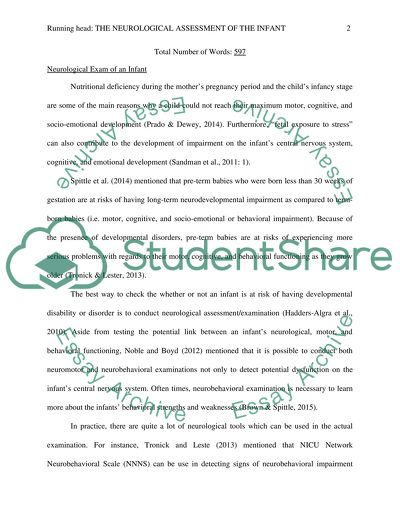The Neurological Assessment of the Infant (Ages Birth to 12 months) Assignment. Retrieved from https://studentshare.org/nursing/1685914-the-neurological-assessment-of-the-infant-ages-birth-to-12-months
The Neurological Assessment of the Infant (Ages Birth to 12 Months) Assignment. https://studentshare.org/nursing/1685914-the-neurological-assessment-of-the-infant-ages-birth-to-12-months.


